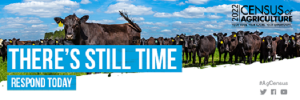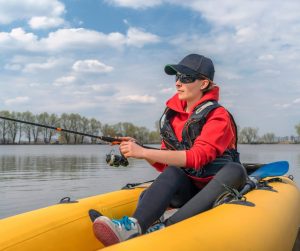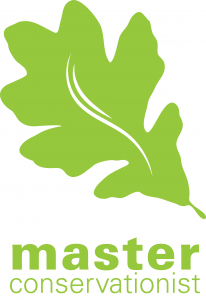CLICK HERE for the latest market quotes from the Iowa Agribusiness Network!
CLICK HERE for the latest market quotes from the Brownfield Ag News Network!
CLICK HERE for the latest market quotes from the Iowa Agribusiness Network!
CLICK HERE for the latest market quotes from the Brownfield Ag News Network!
(Radio Iowa) – This is prime time for Iowa bird watchers as spring migration season is bringing all sorts of unusual feathered travelers to our backyards, well beyond the everyday robins, sparrows and blue jays. Avian ecologist Steve Kolbe is working to raise awareness about migratory birds as they help provide pest control, pollination and serve as a food source for other wildlife. Kolbe says migrating birds face multiple perils on their journey each year, putting the ecosystem in danger. “They encounter a habitat that has been degraded or destroyed during migratory stopover,” Kolbe says. “It’s sort of akin to if you are used to making a trip and you’re always stopping at a gas station then all of a sudden that gas station is closed-that maybe you planned on filling up and then you have some issues finding gas before you run out.”
Kolbe says Iowans who own a certain type of pet can play a key role in helping these birds on their annual flights. “One of the things that bird researchers really stress is keeping your cats inside,” he says. “Cats are a main source of mortality for birds and especially migrant birds. It’s also safer for cats to be inside, too.”
Kolbe also suggests helping migrating birds by putting out resources like food and water, and reporting birds that you see and their condition. He says websites like “eBird-dot-org” can help document changes in patterns and behaviors throughout time. Iowans can see nearly 400 types of birds throughout the year.
(Des Moines, Iowa) – The Iowa Department of Natural Resources Wildlife Bureau has announced they will host four public meetings, to present results from the DNR’s comprehensive evaluation of administrative rules and regulations. The comprehensive review is required by Gov. Reynold’s Executive Order Ten.
The public meetings are scheduled for
The Iowa DNR Wildlife Bureau will present the proposed edited chapters during the meetings. These meetings are not seeking input on future hunting seasons or proposed hunting regulations.
DES MOINES, Iowa, May 17, 2023 – The U.S. Department of Agriculture (USDA) will cover up to 75% of the costs associated with organic certification, up to $750 per category, through the Organic Certification Cost Share Program (OCCSP). Iowa Farm Service Agency (FSA) encourages organic agricultural producers and handlers to apply for OCCSP by Oct. 31, 2023, for expenses incurred from Oct. 1, 2022, through Sept. 30, 2023. As part of USDA’s broader effort to support organic producers and in response to stakeholder feedback, this year FSA increased the cost share to the maximum amount allowed by statute.
“We’re taking steps to better support Iowa organic producers,” said Matt Russell, State Executive Director for FSA in Iowa. “We’ve heard about this program’s value in helping Iowa organic producers and handlers obtain or renew their certifications under the National Organic Program, and I’m pleased that we’re able to increase and restore the cost share to the statutory limit this year. Organic certification costs have long been identified as a barrier to certification, and this assistance, at its full levels, will help Iowa organic producers participate in new markets while supporting and growing our local and regional food systems.”
Cost Share for 2023: The cost share provides financial assistance for organic certification, and producers and handlers are eligible to receive 75% of the costs, up to $750, for crops, wild crops, livestock, processing/handling and state organic program fees (California only). Iowa producers have until Oct. 31, 2023, to file applications, and FSA will make payments as applications are received.
How to Apply: To apply, Iowa producers and handlers should contact their local FSA office USDA Service Center. As part of completing the OCCSP application, producers and handlers will need to provide documentation of their organic certification and eligible expenses. Organic producers and handlers may also apply for OCCSP through participating state departments of agriculture. Additional details can be found on the OCCSP webpage.
Opportunity for State Departments of Agriculture
FSA is also accepting applications from state departments of agriculture to administer OCCSP. FSA will post a synopsis of the funding opportunity on grants.gov and will electronically mail the notice of funding opportunity to all eligible state departments of agriculture. If a state department of agriculture chooses to participate in OCCSP, both the state department of agriculture and FSA County Offices in that state will accept OCCSP applications and make payments to eligible certified operations. However, the producer or handler may only receive OCCSP assistance from either FSA or the participating state department of agriculture.
Other USDA Organic Assistance
On May 10 USDA AMS announced the availability of approximately $75 million in grant funding for the Organic Market Development Grant (OMDG) program. OMDG will fund businesses transitioning to organic or initiating new organic production or processing and support new, improved and expanded markets for domestically produced organic products with a focus on processing capacity, market access, and product development.
DES MOINES, IA – Over the next several weeks, USDA’s National Agricultural Statistics Service (NASS) will conduct two major mid-year surveys, the June Agricultural Survey and the June Area Survey. The agency will contact nearly 4,700 producers across Iowa to determine crop acreage and stock levels as of June 1, 2023.
“The June Agricultural Survey and the June Area Survey are two of the most important and well-known surveys NASS conducts,” explained Greg Thessen, Director of the NASS Upper Midwest Regional Field Office. “When producers respond to these surveys, they provide essential information that helps determine the expected acreage and supply of major commodities in the United States for the 2023 crop year. The results are used by farmers and ranchers, USDA, exporters, researchers, economists, policymakers, and others to inform a wide range of decisions.”
Producers can respond to the June Agricultural Survey online at agcounts.usda.gov, by phone, or mail. They will be asked to provide information on planted and harvested acreage, including acreage for biotech crops and grain stocks. For the June Area Survey, agency representatives will interview farm and ranch operators in randomly selected segments of land over the phone or in person. Producers will be asked to provide information on crop acreage, grain stocks, livestock inventory, land values, and value of sales.
“NASS safeguards the privacy of all respondents, by keeping all individual information confidential and publishing the data in aggregate form only to ensure that no operation or producer can be identified,” said Thessen. “We recognize that this is a hectic time for farmers, but the information they provide helps U.S. agriculture remain viable and capable. I urge them to respond to these surveys and thank them for their participation.” 
NASS will publish the data in a series of USDA reports, including the annual Acreage and quarterly Grain Stocks reports June 30, 2023. These data also contribute to NASS’s monthly and annual Crop Production reports, the annual Small Grains Summary, annual Farms and Land in Farms and Land Values reports, various livestock reports, including Cattle, Sheep
and Goats, and Hogs and Pigs, and USDA’s monthly World Agricultural Supply and Demand Estimates.
These and all NASS reports are available at nass.usda.gov/Publications/. For more information, call the NASS Upper Midwest Regional Field Office at (800) 772-0825.
(Radio Iowa) – Iowans who happened to be up for sunrise today (Wednesday) got a rare treat. Smoke from wildfires in Alberta, Canada, is filtering high over Iowa and it’s making the sun appear as a golden-reddish-orange ball. Meteorologist Brooke Hagenhoff, at the National Weather Service, says the phenomenon should be visible at sunset tonight, too, and for that matter, the sun and sky may look unusual all day, perhaps longer. “It’s really making kind of that reddish look to the sky. It’s gonna look pretty hazy most of the day,” Hagenhoff says. “Right now, it looks like that hazy sky’s going to hang on at least through tomorrow. We do have a cold front coming through on Thursday with some thunderstorms that may help to push some of it out as we get into the end of the week.”
Iowans who have certain health issues and difficulty breathing should -not- feel any ill affects from the smoke, as it’s far up in the atmosphere, perhaps 20-thousand feet up. Plus, she says, it doesn’t even smell like smoke outside. “In the afternoon, sometimes this time of year, whenever it’s warm, you can get some deeper mixing as the ground kind of warms up. That could start to pull some of it down, but again, just how much is kind of an unknown,” Hagenhoff says. “So just something to use caution. Of course, there are air quality products out there so anyone with concerns would want to check to see what those levels may be.”
There are at least 90 wildfires now burning in Canada with more than 20 of them out of control. More than 20-thousand Canadians have been evacuated from their homes because of the fires, and cities like Calgary are under alerts due to poor air quality. Hagenhoff doesn’t anticipate anything similar here and the smoke is so high aloft, it doesn’t even appear on radar over Iowa. The odd-looking sky could persist, though. “Because it’s such a small-scale thing with the fires in Canada, and how that’s going to interact with our systems, and how it gets drug down,” she says, “it’s a little tough to kind of figure out exactly where we’ll be with any kind of length into the future past a couple days.”
The federal government runs a website called simply, AirNow, and it’s focused on fires and smoke. The site includes a color-coded map through which you can zoom in on individual Iowa counties to check on air quality.
More at https://fire.airnow.gov/
(Iowa DNR News, 5/17/23) – Despite a rainy cold closing weekend across much of state, Iowa’s wild turkey hunters reported harvesting more than 14,800 birds through the mandatory registration system, an increase of nearly 3,000 versus the 2022 harvest. Officials with the Iowa Department of Natural Resources report Iowa’s spring turkey seasons began April 7 with the youth season and ended on May 14. Hunters purchased nearly 54,500 spring turkey tags, an increase of 2,000 licenses from 2022.
Turkey production has been good across most of the state the past two years and these two-year-old birds were likely a good portion of the harvest, said Jim Coffey, forest wildlife biologist with the Iowa Department of Natural Resources (DNR). “The two-year-old birds are the most likely to gobble and the most likely to move,” he said. “When we combine birds willing to move, pretty good weather during the season and the great passion our turkey hunters have for the resource, we get a harvest for the record books.”
While the hunting season may be done for 2023, Iowans can help the DNR with its annual turkey production estimates by reporting all the turkeys seen during the months of July and August. This annual survey is designed to predict the overall production of wild turkeys that will be available for the 2024 season. The DNR will have a link to the survey on its website before it begins on July 1, where Iowans seeing wild turkeys are asked to provide the date and county in which the turkey(s) was seen, if it was an adult female or adult male (males have beards on their breast), and whether there are young poults (baby turkeys) present.
Annual production surveys conducted by the DNR are an important component of the species management plans, which includes providing hunting opportunities. Anyone seeing turkeys is encouraged to participate in this online survey.
(Harlan, Iowa) – The Shelby County Conservation Dept. is hosting its first kayak fishing session in a little over three-weeks. The event takes place Saturday, June 3rd from 8 AM to 10 AM, at Prairie Rose State Park. The group will meet on the east side of County Road M47. Women and families are highly encouraged to participate! This session will be limited to 15 people and there is a $5 fee. Pre-registration is required, please sign-up here: https://conta.cc/3ob9RYO
over three-weeks. The event takes place Saturday, June 3rd from 8 AM to 10 AM, at Prairie Rose State Park. The group will meet on the east side of County Road M47. Women and families are highly encouraged to participate! This session will be limited to 15 people and there is a $5 fee. Pre-registration is required, please sign-up here: https://conta.cc/3ob9RYO
Kayaks and fishing poles will be provided, but feel free to bring your own equipment. If you are signed up for the hook and paddle program through the DNR, you will get extra points for attending this event. This is a free fishing weekend, so fishing licenses are encouraged, but not required.
(Radio Iowa) – Researchers at Iowa State University are developing an advanced type of sensor which farmers can place in their fields to keep constant tabs on nutrient levels and soil moisture. Jonathan Claussen, a mechanical engineering professor at I-S-U, says the sensors are about the size of a tent stake and they’re designed to stay in the ground all growing season, about four months, through any temperature swings or rain events. “They monitor total nitrogen, so both nitrates and ammonia, and they can tell the farmer when and where in that field fertilizer needs to be applied,” Claussen says. “Fertilizer can be up to a third of their farming costs, so it’s potentially a big cost savings if we can reduce even a portion of that.”
The device needs to be both rugged and easy to use, Claussen says, as he notes farmers don’t want to read a 20-page instruction manual. It also needs to be inexpensive, so farmers can place a wide network of sensors. “This really gives the farmer an opportunity to practice precision agriculture,” Claussen says. “This way, they can do kind of a spoon feeding of the fertilizer throughout the growing season so they only apply when and where they need it.”
Ideally, farmers could purchase dozens of the sensors to monitor the soil’s nutrient levels in real time, as they’ve worked to keep the price at less than one-dollar per sensor. “This allows them to do continuous soil sampling without that expense of having to ship it off to the lab but they can get results immediately,” Claussen says. “They can monitor so they can still have their maximum yields. But at the same time, we can show them, you can get those great maximum yields but still use less fertilizer and have less agricultural inputs.”
The I-S-U team has worked to develop an array of sensors for other purposes, for things like food safety and even testing for COVID-19.
(ISU Extension News) – Iowa State University Extension and Outreach will offer the Iowa Master Conservationist Program in Adair and Cass County as a joint program between the two county Extension Offices this summer and fall. The program will take place at outdoor parks and public areas within the two counties, providing participants with hands-on interaction with the diversity of the state’s natural resources. The program teaches about Iowa’s natural ecosystems and the diversity of conservation challenges and opportunities that exist in the region. Graduates of the course learn to make informed choices for leading and educating others to improve conservation in Iowa.
The program consists of approximately 12 hours of online curriculum and six face-to-face meetings. The online modules will include lessons and resources by Iowa State subject-matter experts to be reviewed at the participants’ own pace at home or at their local County Extension office. Module topics include conservation history and science, understanding Iowa ecosystems, implementing conservation practices in human dominated landscapes and developing skills to help educate others about conservation practices. 
The first meeting will take place on Tuesday May 30th at Lake Anita State Park, beginning at 6 PM. A total of six face-to-face meetings will build on the online lessons and be held at different locations in Adair and Cass County one Tuesday evening per month from June-October of 2023. All meetings will begin at 6 PM and last from 2-3 hours depending on the topic. Each face-to-face meeting will be led by local subject-matter experts to demonstrate how the principles covered in the online curriculum and play out locally.
Registration for the course is $50 per person and is due at the time of registration. To register or with questions, contact the ISU Extension and Outreach office in Adair County at 515-231-2741 or Cass County at 712-243-1132 or visit www.extension.iastate.edu/cass or www.extension.iastate.edu/adair for registration forms and details. The deadline to register is Thursday, May 25 to guarantee a space in the course.